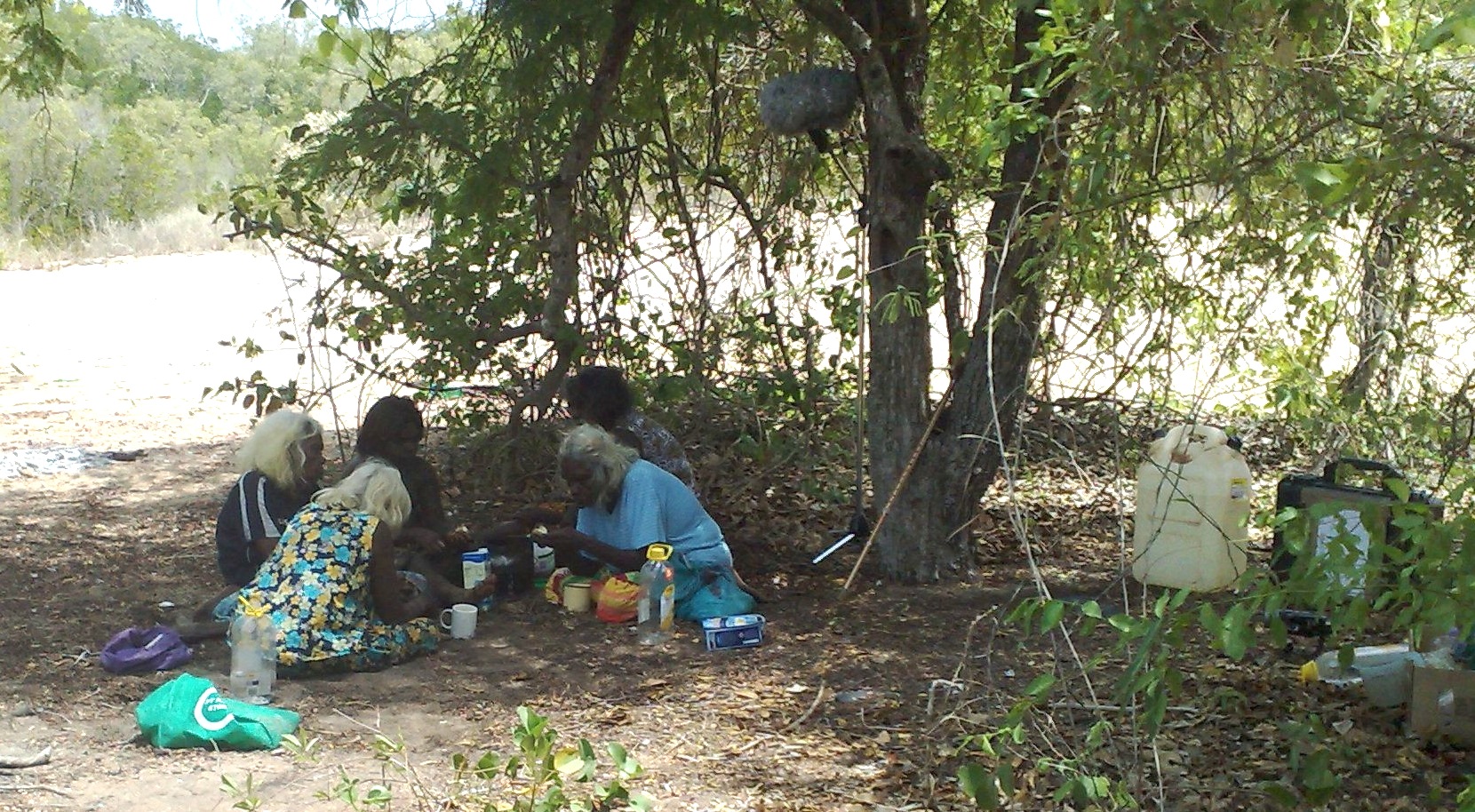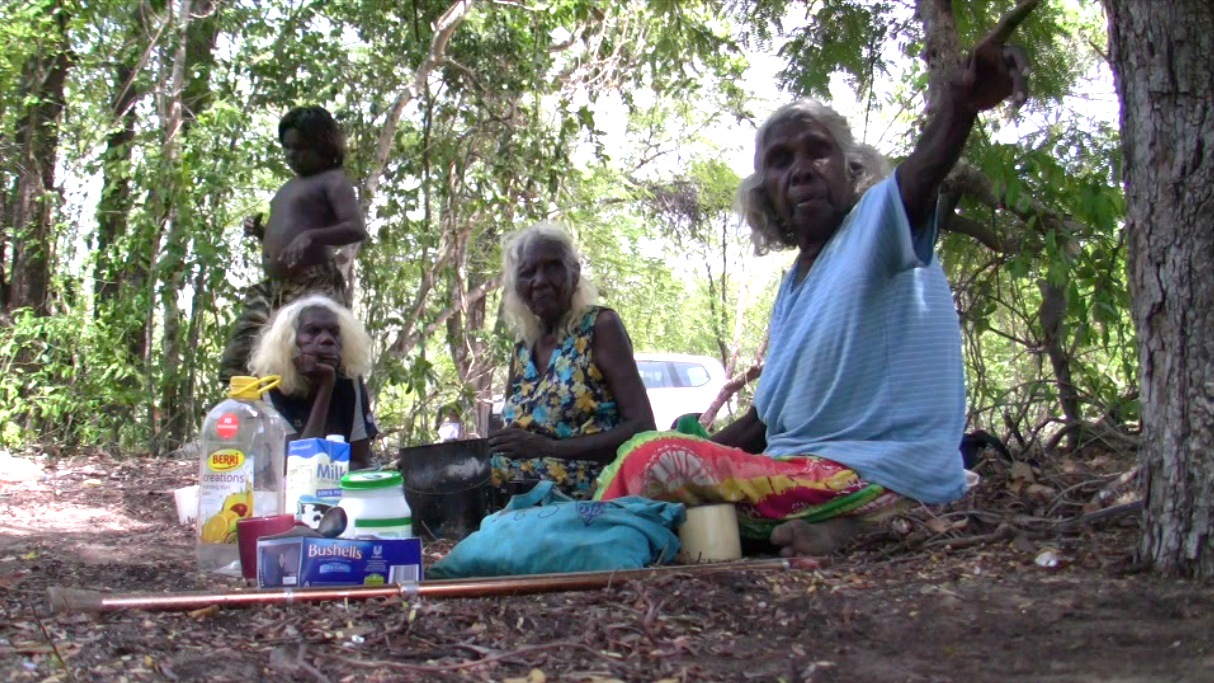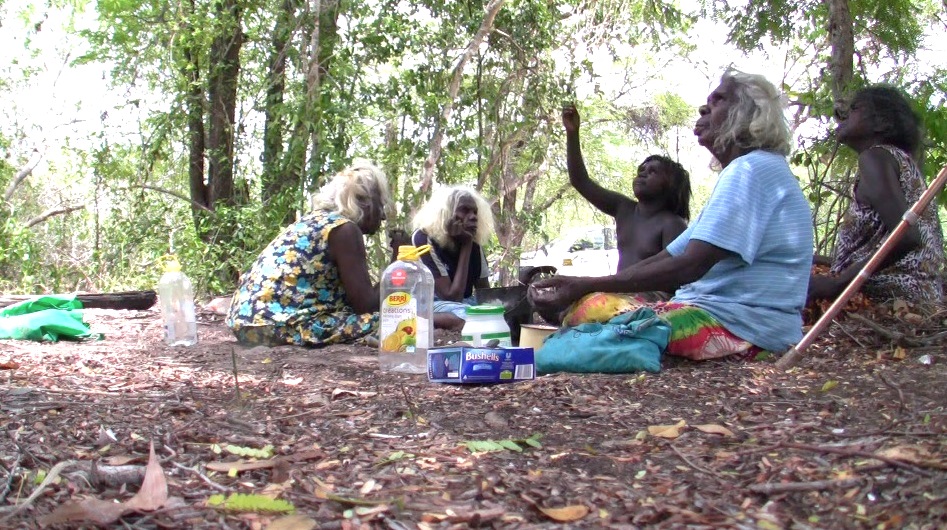In 2006 Tom Honeyman began an e-thread on the benefits of and complications relating to using digital video to record natural conversation in a fieldwork setting (see also here, here and here and here). For several years I have been trying to record conversation without actually being present to monitor the recordings. It can be quite tricky because there are so many variables. Mostly I haven’t been completely satisfied with the results. I began by using straight audio, partly because it is easier to bring it off successfully but then the visual information was sadly lacking. My first attempts with video were not very successful, partly because of inadequate equipment. I had a large imposing camera with a huge tripod. The resultant recordings were far from naturalistic. Three years ago I said that I hoped for success adapting techniques reported here, for audio, to video. It has taken a while to provide an update because even with a smaller camera, I felt I hadn’t got the mike placement right, or the images were overexposed, or they weren’t clear enough to see people’s faces easily. In fact I’ve been getting sick of trying to transcribe this sort of material. On my latest fieldtrip I was determined to do a really good recording. This meant getting outdoors in the bush, away from the sounds of ceiling fans, vehicles, aeroplanes and whippersnippers.
I recently purchased a high definition Canon HF-11 (which I think is already superseded). I also fitted a wide-angled lens. The already wide filed of view of the new HD camera becomes even wider with the lens. This allows you to get the camera in close enough to catch peoples’ faces – sufficient to read their lips – yet the field of view is wide enough to allow for their moving about.
You can set up equipment so that people are sitting near a microphone and within the field of view, but there are no guarantees that people will stay there. What can you do to make sure that people stay where they are? Nothing really. But sometimes the environment might be of some assistance. If you are in the bush and it’s really hot, a good tree with plenty of shade can provide natural ‘walls’ that will ultimately constrain where people end up sitting, even if they wander off for a while. Unlike walls in a building, these shade walls do not create an echo.
This trip I was lucky enough get hold of a Rycote windshield. Inside I put a Rode NT4. No chance of having the recording destroyed by wind noise with that windshield. it’s awesome but it’s not exactly unobtrusive. So I mounted it on a tall overhead stand and put it next to the tree, over people’s heads like a boom mike. Certainly the tree goes a long way towards making the mike less obtrusive. You can just see the small black video camera in the bottom right of this photo, partly hidden by some leaves. You should also notice where the shadows fall on the ground.

The solid-state camera can record very large files for up to about nine hours, so there is no need to change video tapes. This means once you’ve got the sound levels adjusted and the people within the viewfinder (allowing for the fact that they may well reposition themselves) you can just walk away from the camera. Once we had lunch, I went and caught up on some reading.
You can see that the results were rather good. Here are a few screen shots. There’s no mike in view here.



The sound was pretty good. Being the build up to the wet season there were a few cicadas which can be pretty noisy. Their noise is reasonably high frequency so I’ve been able to suppress them with a graphic equalizer, without losing too much of the speech. You can’t do that so easily with engine noise.
Having a decent recording makes the job of transcription sooooo much easier. You can see who is speaking and what they are doing, where they are pointing and who they are looking at. When it comes to transcription, all this cuts down the workload massively and makes the job easier for all concerned. So finally, I’m very glad to have something decent to report. A happy camper.
 Follow
Follow
Great post, Joe. Thanks a lot!
Cool stuff, this. Are the screenshot the max resolution of the image? They look nice and crisp!
I’ve reduced the size and quality somewhat for the web page. I just took a screen snapshot of the paused .mov file. You can also export jpegs from quicktime pro, I haven’t tried that. These are certainly better than other video snaps I’ve taken.